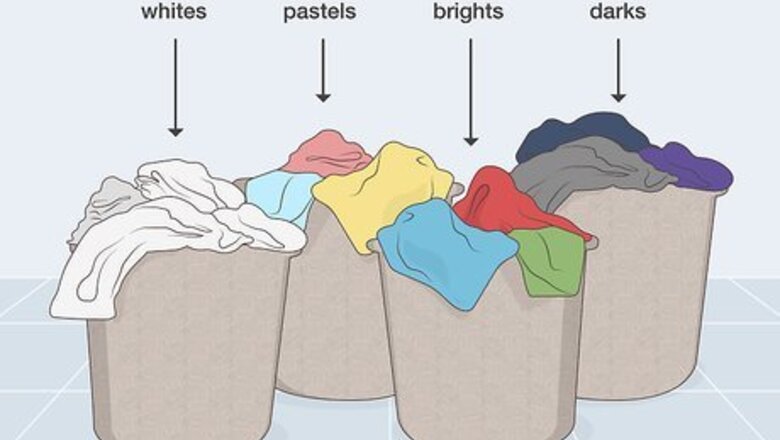
views
Sort your clothes before washing them.
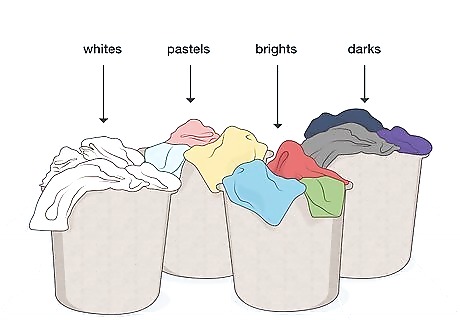
Laundry is a big mixing and matching game. It may be tempting to toss all your clothes into the washer at once, but this isn’t always the best option. Instead, sort your clothes by color, as well as by how dirty they are. Also, divide certain clothes, like loose knits and delicates, into their own separate load. It may seem a bit tedious at first, but sorting your laundry helps keep your garments in great shape. Coloring sorting prevents any unwanted dye transfer during the wash cycle. Sorting clothes by dirtiness stops any extra grime from sticking to your less-soiled clothes. For instance, you could divide your laundry into 4 color piles: whites, pastels and medium-toned garments, brights, and darks. You might also separate your really dirty clothes from your less soiled ones. Experts also suggest washing towels, fuzzy shirts, and fuzzy robes in their own load, since they tend to give off lots of lint.
Read the care labels.

Care labels walk you through the best laundry options for your clothes. Check for a soft tag along the inside of your garment—it’ll probably have a series of different symbols on it. These shapes suggest the best wash temperature and cycle to use, as well as any other precautions you should take. The bucket of water symbol lets you know if and how you can wash your garment. An open triangle means you can bleach the garment, while a solid, crossed out triangle means you shouldn’t use bleach. A square with a circle inside represents specific tumble drying instructions. A symbol of an iron means that the garment is safe to iron.
Treat stains right away.
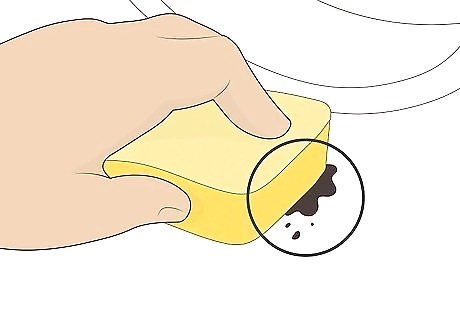
Stains are easier to remove when they haven’t set into the fabric. Experts advise blotting the stain with a clean sponge instead of rubbing it in, since rubbing a stain will only force it deeper into the fabric. Laundry experts also suggest pretreating the stain before tossing it into the wash. If you spilled coffee on your favorite shirt, soak the stained fabric in cold water and pretreat it with detergent or stain remover. Then, wash the garment with sodium hypochlorite bleach, if the care label allows it. To treat ink stains, dip a clean sponge in rubbing alcohol and dab it around and over the stain. Flip the garment over, setting the stain face-down on a sheet of clean paper towels. Dab more rubbing alcohol along the back of the stain, replacing the paper towels as needed. Then, rinse out the stain as best as you can, and wash the garment as you normally would. For fresh blood stains, soak the clothing item in a container of cold water, and wash it as usual. For dried blood stains, soak the garment in a basin of warm water mixed with an enzyme-rich product. Then, launder the clothing item as usual. To care for light mud stains, spread a powder detergent paste over the soiled area and wash it as you normally would. For heavier mud stains, pretreat the garment in a basin of water mixed with a detergent or enzyme-rich product. Then, add it to your next load of laundry.
Launder T-shirts in cold water.
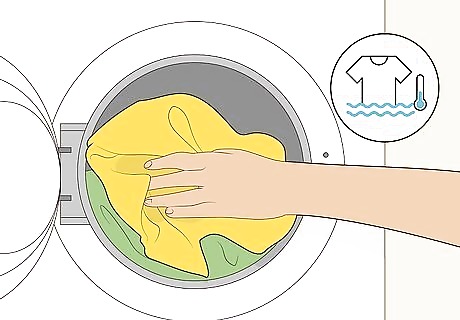
T-shirts are safe to toss in both your washer and dryer. Experts recommend a cold water cycle in the washer, along with a permanent press cycle in the tumble dryer. If your shirts have obvious pit stains, wash them with an oxygen-based bleach. In general, cold water is better for your clothes, and may keep them from shrinking and fading over time.
Wash jeans infrequently and inside-out.

Washing your jeans inside-out will help prevent fading. Experts suggest washing jeans once every 3 wears. Turn your jeans inside-out to protect the color, and wash them in a gentle, cold water cycle. Hang up your jeans to air-dry once they’re out of the washer.
Hand-wash delicates in cool water and let them air-dry.
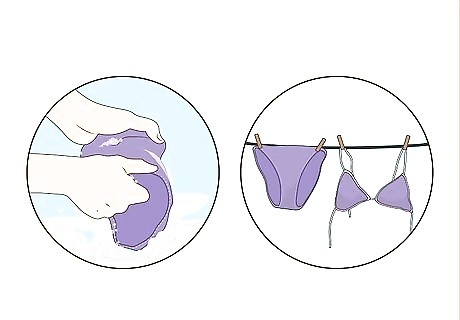
Delicates don’t hold up well in the washing machine. Unfortunately, a run through your washer may damage the elastic, if your garment has an elastic band. Instead, hand-wash your garments in a basin of cool water with 1 tsp (4.9 mL) of gentle detergent. Then, delicately wring out any leftover water, and drape the clothing item on a drying rack. “Delicates” include garments like your intimates, swimsuits, and underwear.
Press or air-dry dress shirts after washing them.
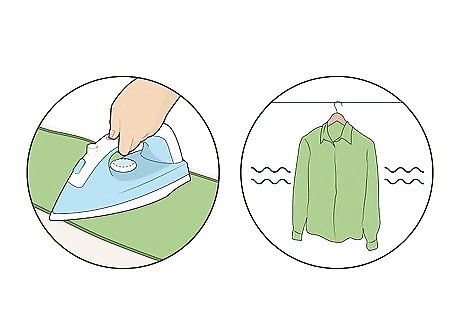
It’s safe to wash dress shirts at home, but don’t tumble dry them. Treat any stains ahead of time, and toss your shirt into a cold water cycle. Once the wash cycle is done, shake out the shirt to get rid of any wrinkles. Then, press your shirt or air-dry it on a hanger. Unfortunately, tumble dryers will shrink and damage your shirt over time. Experts recommend ironing dress shirts straight out of the washer. In general, iron the collar first, then the cuffs, and then the body of the shirt.
Clean delicate fabrics carefully so they don’t get ruined.
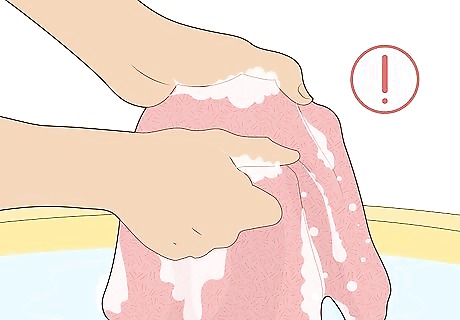
Delicate fabrics don’t fare well in a standard laundry load. Materials like rayon, lycra, silk, wool, nylon, thin knits, and spandex all qualify as delicate materials, along with hand-knitted and hand-crocheted garments. Try not to wash these clothing items unless they’re really dirty, and always check the care label before cleaning them. Once these garments are all clean, stash them in a cool, roomy area. For instance, you can hang delicate jackets, dresses, and shawls on padded hangers, while knitwear can be folded and stored flat. Always take extra-fine silk, leather, furs, feathers, and suede to a professional cleaner.
Avoid overloading your dryer.

Big loads take a lot longer to dry all the way. Also, larger laundry loads tend to look wrinklier once you pull them out. To prevent any extra complications, dry a small amount of clothes that can move and tumble easily in the dryer. Air drying is a great alternative to traditional tumble drying. It’s a lot less hard on your clothes, and it’s better for the environment, too!
Iron specific fabrics at their recommended temperatures.
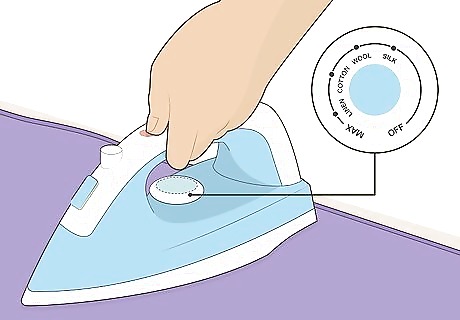
There isn’t a universal temperature that works for all fabrics. Instead, check your care label to see which fabric your garment is made out of. Then, use the designated fabric setting on your iron, if it has one. For instance, silk and cotton need to be ironed while the garment is damp, while nylon or polyester should be ironed mostly dry. Some irons might come with basic temperature settings, like “cool,” “low,” “warm,” or “hot.” For example, fabrics like acetate, nylon, polyester, and acrylic need a cool iron, wool and silk need a warm iron, and cotton needs a hot iron. Ironing your clothes correctly helps keep them in great shape.
Hang up your clothing with wooden and padded hangers.
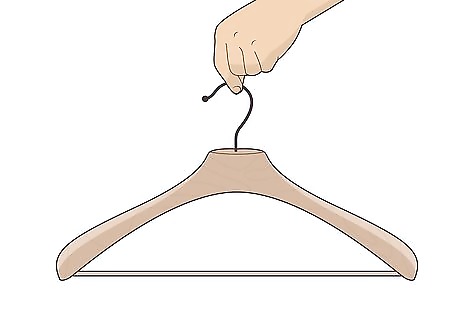
Wooden and padded hangers are much better than wire ones. Wooden hangers work well with coats, pants, jackets, and shirts, while padded hangers provide extra support to garments made with delicate materials, such as silk. Unfortunately, wire hangers don’t provide a lot of support, and may change the shape of your garment eventually. Suit hangers are a great option for both suits and certain jackets. Hangers with clips are great for skirts. Always hang up garments that tend to get wrinkly, like dresses, nice shirts, and suits. Felt hangers are another sturdy, safe option for your clothes.
Stick with plastic for long-term storage.

Cardboard and wood boxes might damage your clothes over time. Instead, slip your out-of-season garments into plastic boxes, keeping them in a cool, dark, and dry spot. If you’re storing garments made with wool or other natural fibers, don’t seal the plastic bin completely. Instead, give your clothes a little room to breathe.
Mend your clothes as needed.
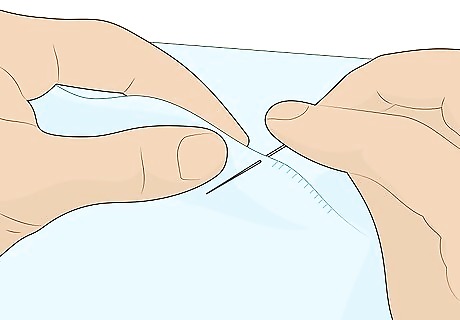
Purchase a sewing kit for any last-minute repairs. Tears, snags, and rips can pop up when you least expect them, but they don’t have to be a death sentence for your favorite garments. Shop for a sewing kit online, or pick one up from a big-name retail store. When the time comes, mend your clothes with a sewing needle and a spool of thread that matches your garment. Sewing kits usually come with small spools of thread, sewing needles, a small pair of scissors, and other odds and ends. You can pick up a basic sewing kit for less than $10. If you aren’t a fan of sewing, fix up your tears and snags with mending glue or iron-on mending fabric instead.
Clean your jewelry gently.
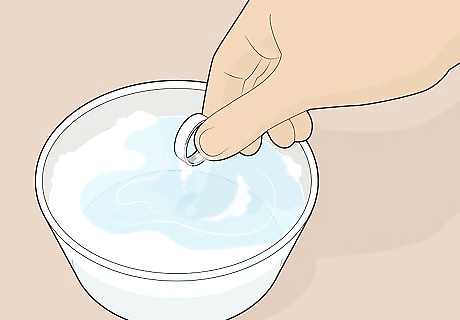
Fill a bowl with sudsy, lukewarm water. Soak your jewelry in the mixture, lightly scrubbing away any dirt and grime with a soft brush. Don’t use really hot or cold water—extreme temperatures can damage certain gemstones. Also, try not to soak any porous gemstones, like opals, turquoise, or pearls. If any of your jewelry is damaged or broken, take it to a jeweler instead of trying to fix it at home.
Clean and store your shoes properly.
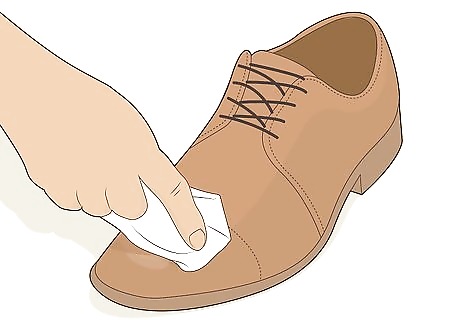
Inspect your nice shoes each time you wear them. Before putting them away, clean off your leather shoes with a clean cloth, and wipe away any dust collecting on your suede shoes. Once you’re done wearing them, experts suggest sliding shoe trees into your footwear, so they keep their shape. Shoe trees are adjustable, and fit snugly between a shoe’s toe and heel.




















Comments
0 comment